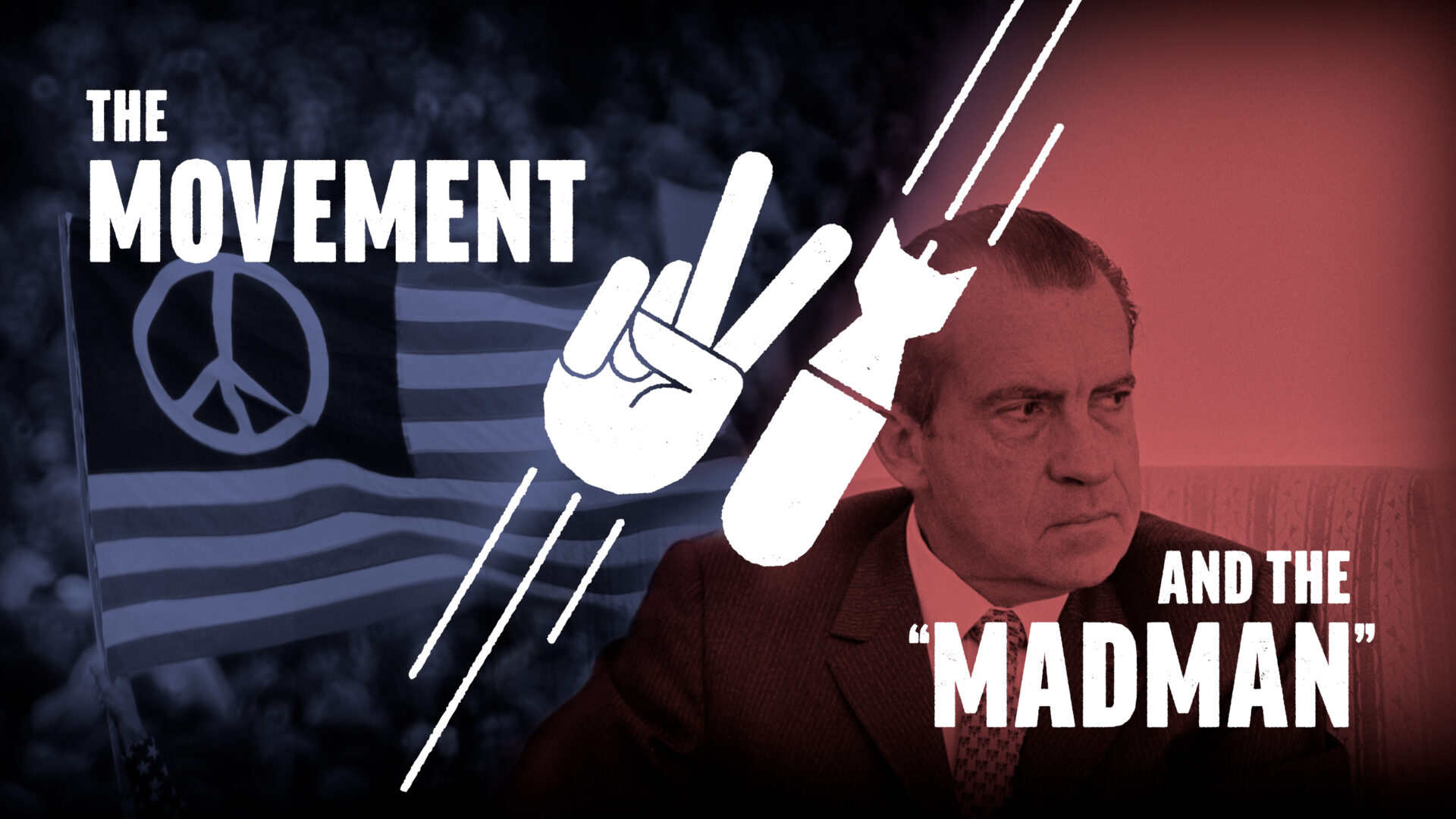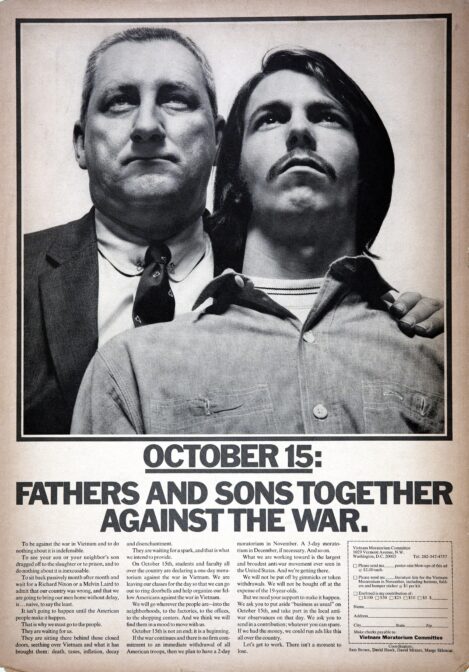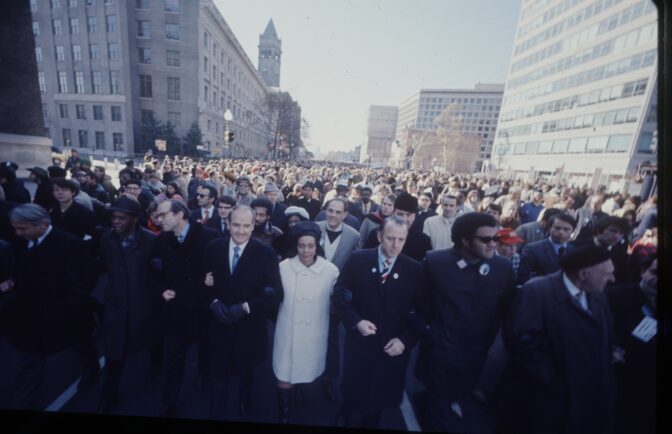
American Experience: The Movement and the Madman
Explore the 1969 showdown between President Nixon and the anti-war movement
-
Christina Zeiders

The Movement and the Madman shows how two of the largest anti-war protests the nation had ever seen pressured President Nixon to cancel his “madman” plans for a massive escalation of the U.S. war in Vietnam, including a threat to use nuclear weapons.
Protestors at the time had no idea how influential they could be and how many lives they may have saved.
Through archival footage and firsthand accounts from movement leaders, Nixon administration officials, historians, and others, the film explores how the leaders of the anti-war movement mobilized different groups across the U.S. to create two massive protests that changed history.
By 1968, the U.S. had been at war in Vietnam for four years. There were over 500,000 troops on the ground and 31,000 Americans had been killed. Nixon had defeated Democratic nominee Hubert Humphrey and the anti-war movement decided that something dramatic needed to happen.
Nixon publicly belittled the movement, but he was acutely aware that Lyndon Johnson’s presidency had been brought down by the constant chants of anti-war protestors. He promised never to use nuclear weapons in Vietnam while campaigning but changed his tune once he was in office.

Courtesy of David Hawk
Fathers and Sons Together Against the War Moratorium October 15 poster and ad in The New York Times.
“His secret plan was to threaten the North Vietnamese with nuclear weapons,” said Morton Halperin, a Defense Department veteran and an aide to Henry Kissinger. “He was convinced that the way to make the threat credible was for the North Vietnamese to fear that he was crazy and might actually do this.”
Clandestine talks with the Soviet ambassador and the North Vietnamese set a November 1, 1969 deadline for Hanoi to accept U.S. terms for ending the war or face disastrous consequences. The National Security Council and the Pentagon began military preparation for “Operation Duck Hook” – a plan that included bombing North Vietnam, mining Haiphon harbor, and using nuclear bombs near the Chinese and Laotian borders.
Unaware of the “madman” plan, anti-war movement leaders developed new and bigger ideas for protests in the fall. The first was to call for a Moratorium on October 15, 1969, a nationwide protest with an emphasis on local demonstrations throughout the country.
The second plan – created by the New Mobilization Committee to End the War in Vietnam – hoped to organize the largest peace marches and rallies the country had ever seen on November 15 in Washington D.C. and San Francisco.
With two to three million people taking part on hundreds of campuses and over 200 cities and towns across the country, the October 15 Moratorium was a wild success. Dispelling the myth that the antiwar movement consisted solely of “hippies” and leftists, the crowds consisted of labor leaders, church groups, civil rights activists, lawmakers, housewives, veterans, families, and more.
Stunned by the Moratorium’s success – and facing the prospect of another huge protest on November 15 — Nixon called off “Operation Duck Hook.”
But Nixon had one move left and, later that month, he ordered a secret worldwide alert of U.S. nuclear forces to send what he called “a special reminder” to the Soviets and North Vietnamese of what he might unleash.
Following the Moratorium’s success and with the November 15 demonstrations quickly approaching, Nixon focused on discrediting the antiwar movement and the media for their positive coverage of the protests. In a nationally televised speech on November 3, Nixon blamed demonstrators for undermining the war effort and appealed to “the great silent majority” for support.

Pond 5
Coretta Scott King in white coat during the Moratorium to End the War in Vietnam March in Washington, DC, United States, 15 November 1969.
Tensions built as the protests neared, with Nixon barricading the White House with buses and military troops. On November 15, up to half a million protestors descended on D.C. while 250,000 more rallied in San Francisco. It was the largest single-day protest the county had ever seen.
The crowd sang John Lennon’s Give Peace a Chance from the Washington Mall as folk singer Pete Seeger shouted, “Are you listening, Nixon?”
He was. Nixon’s “madman” plan was shelved, and the nuclear alert ended.
“We now know we had a big impact on Nixon and Kissinger, what they thought they could get away with in November, namely blowing Vietnam to bits, and maybe even using nuclear weapons,” said organizer Rev. Dick Fernandez. “They had to take it off the table. There were too many of us who were saying no.”
American Experience: The Movement and the Madman premieres on WITF TV on Tuesday, March 28 at 9pm. You can stream it for free using the PBS or WITF app starting on March 29 through April 4.


